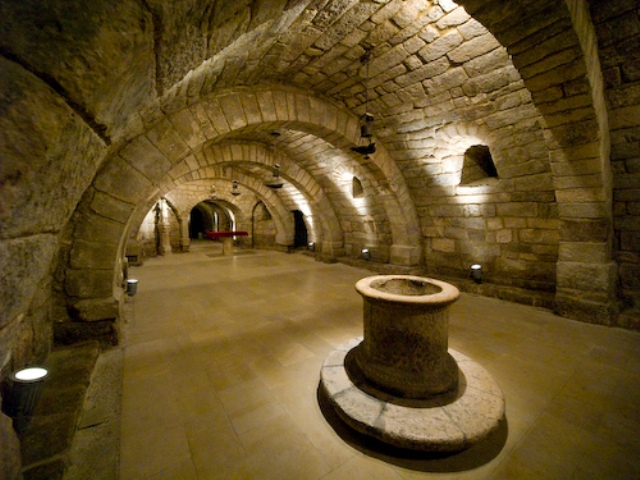They spring up throughout villages and countryside, with their characteristic squat stone silhouettes and their serene interiors, inviting contemplation. Some 2½ hours from Madrid, the province of Palencia in the autonomous community of Castile and León is Europe’s single richest trove of Romanesque landmarks, built in the distinctive, rounded-arch architecture of 6th- to 13th-century Europe.
Along the reknowned Way of St. James pilgrimage route to Santiago de Compostela, which crosses Palencia from east to west, is perhaps the single most quintessential Romanesque structure of all: the Church of San Martín de Frómista. Built in the 11th century, its comprised of three naves, a transept, a lovely cupola, and striking column capitals.
Continuing along the Way, we come across Población de Campos and its simple hermitages of San Miguel and Perpetuo Socorro. In Carrión de los Condes you can visit the Church of Santa María de las Victorias y del Camino, on whose façade is a wonderful Adoration of the Magi. In the same town, perhaps even more exquisite is the Christ Enthroned and 12 apostles in the Church of Santiago; also worth admiring here is the Monastery of San Zoilo with its sepulchres of the infamous infantes (princes) of Carrión, who as the story goes wed, then abused, the daughters of the legendary knight El Cid.
Keep in mind much of this is deep country, where sometimes your 4G may not work, and neither will your GPS – don’t sweat it, embrace it. But in the eponymous capital city of Palencia, though, there’s no problem with your tech – and you’ll find another Romanesque gem. It’s in the cathedral, which is Gothic (constructed 1321-1504) but incorporates the San Antolín crypt (top), a relic of the early-Romanesque 7th-century Visigothic period; the diocesan museum also displays quite a few Romanesque sculptures and gold and silver artefacts.
Nearby is the town of Villamuriel de Cerrato where the early 13th-century Church of Santa María la Mayor, boasts a notable cupola and tower; outside its appearance is fortresslike, while the inside is more churchlike. In Dueñas, toward Valladolid, you’ll find the Church of Santa María, a superb example of transition between Romanesque and Gothic, and in Villaconancio there’s the Church of San Julián and Santa Basilisa. Other towns with Romanesque architecture are Torquemada, Valdeolmillos, y Herrera de Valdecañas.
With all that, perhaps the best is yet to come: the north of Palencia province is where the Romanesque is especially thick on the ground. Lomilla is home to a small, austere church, and Santa María de Mave to a marvelous monastery (as is San Andrés de Arroyo, called Santibáñez de Ecla). Another splendid Christ Enthroned awaits in the church of Moarves de Ojeda, and the regional capital Aguilar de Campoo, has not only the hermitages of San Andrés and Santa Cecilia, but also the Museo del Románico, a museum housed in the Monastery of Santa María la Real.
There’s even more where all that came from, and lovers of history and architecture could spend many a day discovering them. Get more information in English at PalenciaTurismo.es.
Best Iberia fares to Madrid from the U.K., from the USA.
.
image | Topyti


